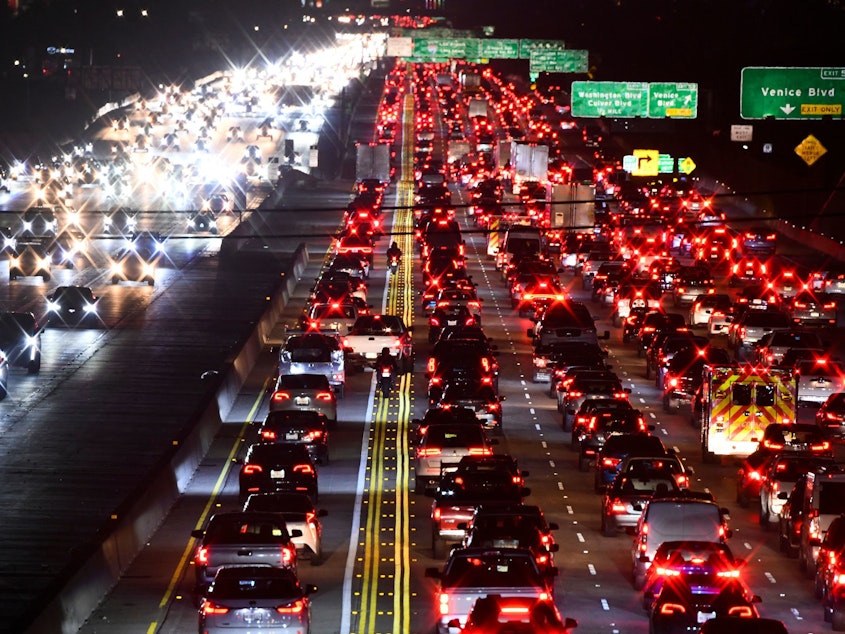How much energy powers a good life? Less than you're using, says a new report

How much energy does it take to have a good and healthy life? A new Stanford University study has found that the answer is far less than the average American is using.
Comparing energy use and quality of life across 140 countries, researchers found that the magic number is 75 gigajoules a year, or less. For context, one gigajoule of energy is equal to about eight gallons of gasoline.
Americans use 284 gigajoules a year per capita, nearly four times that much energy, according to the new research.
"That suggests to me that we could nudge energy use downwards in a bunch of hyper-consuming countries and not just make a more equitable world, but perhaps make ourselves healthier and happier," said lead author and professor of Earth system science, Rob Jackson.
The link between more energy and better quality of life is established. Globally, around 759 million people lived without electricity and 2.6 billion without clean cooking fuel in 2019, according to the World Bank. That comes at an enormous human cost. Around four million people die each year from conditions caused by indoor air pollution from cooking fires, according to the World Health Organization. Access to electricity is critical for providing medical services and powering modern economies.
Sponsored
But this study measured when those benefits plateau. Scientists looked at nine benchmarks for a long, healthy life, based on the United Nations' Sustainable Development Goals: access to electricity, air quality, food supply, Gini coefficient (which measures wealth inequality), happiness, infant mortality, life expectancy, prosperity, and sanitation. All but air quality peaked and began leveling off at or below 75 gigajoules a year.
Researchers also found that there is already enough energy used to get everyone on the planet over that threshold, if it were shared equally. Based on current global energy consumption, there are 79 gigajoules used for each person on the planet.
"It's not super hard to conclude that Americans are generally not as efficient with their energy use as they could be," said Sarah Ladislaw, managing director of the U.S. program at RMI, a non-partisan organization that's pushing the country to transition to cleaner energy faster. But the good news, she said, is that "there's enormous room for the U.S. to improve on this."
Transportation is a main driver of energy use and greenhouse gas emissions
There is no mechanism to redistribute energy equally around the world, and global energy needs are rising.
Sponsored
Both Jackson and Ladislaw point to changes individuals and policymakers can make to lessen American consumption.
"The fastest and the quickest thing that you could do is do conservation and energy efficiency measures," said Ladislaw. That would help not only to reduce greenhouse gas emissions, but would alleviate the energy security crisis caused by the war in Ukraine, she continued.
On the policy level, lawmakers can promote better energy efficiency standards for private businesses, incentivize retrofitting buildings to reduce their consumption, and build or adapt transportation infrastructure that helps people drive less, said Ladislaw.
On the individual level, changing home energy use behaviors could reduce residential energy demand in the U.S. by up to 20%, according to the International Energy Agency. Some examples include heating or cooling your house by zone, rather than setting it all to the same temperature, or using cold water to wash clothes and a clothesline to dry them.
Americans' greatest contribution to global greenhouse gas emissions comes from transportation, mostly from cars and trucks, according to the federal government. It's also one of the top two biggest drivers of energy use by sector, just after industrial use. Jackson pointed to the amount of air travel Americans do compared to other global citizens, as another place to cut back on energy consumption.
Sponsored
"It also means you're walking and biking more, using public transport and making less long trips," said Jackson.
Many approaches require a blend of the two, to incentivize people and businesses to make an up-front investment in equipment or technology that uses less energy over time, said Ladislaw. She is hopeful that the $1.2 trillion Infrastructure Investment and Jobs Act, which includes several provisions focused on reducing consumption, increasing efficiency, and expanding access to renewable energy sources, will do that.
But, Ladislaw cautioned, many of these moves can face resistance at the local level.
"We've got to stop saying, 'Hey, we don't really want a new bus rapid transit route,' or...'We don't want X, Y or Z piece of infrastructure in our area," she said, when it's "in our longer term interest to support that." Especially now that there is growing evidence that those measures, and using less energy generally, do not have a negative impact on Americans living a happy, healthy life. [Copyright 2022 NPR]



